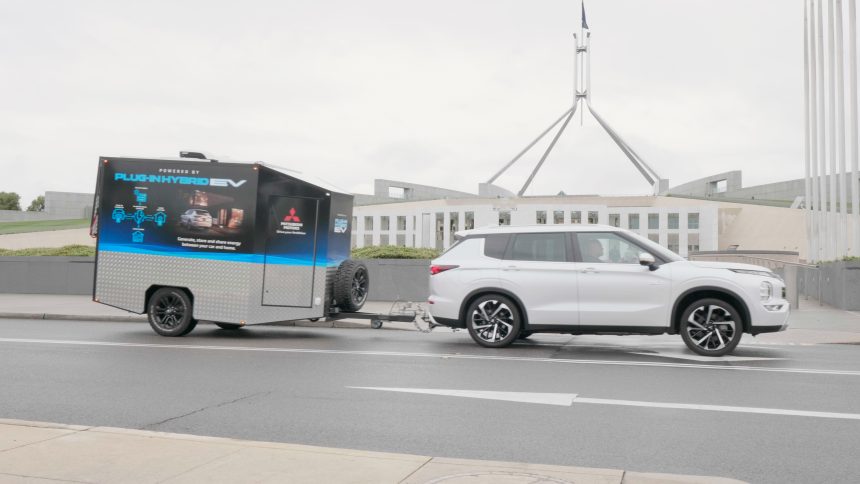A new type of vehicle charging tech has emerged as an unusual lifeline to help Aussies fight the threats of natural disasters.
The groundbreaking technology enables electric vehicles to power essential equipment in rural and remote areas even when the power grid is down.
Known as “bidirectional charging”, there are hopes the mobile power supply could revolutionise disaster relief efforts by allowing emergency teams to operate crucial equipment on the go.
Accessing electricity when cut off from main power will increase residents’ resilience by providing disaster-stricken regions with the tools to keep food and medicines refrigerated, operate water treatment plants and keep communication systems running.
And with meteorologists predicting increased bushfires this summer, Mitsubishi Motors has partnered with Disaster Relief Australia (DRA) to provide their vehicles with the potentially life-saving tech before its wider release down under.
The watts-on-wheels will allow the DRA to power up their disaster response trailer hubs, allowing them to coordinate emergency and relief efforts from cut-off parts of the country.
Mitsubishi Motors CEO Shaun Westcott says bi-directional charging capabilities would be a game changer for Australia’s disaster response teams.
“Bi-directional charging capabilities have the potential to revolutionise how we can manage the major impacts of natural disasters and increase resilience through integration into Australia’s energy infrastructure,” he said.
“We are excited to showcase this cutting-edge and world-leading technology in partnership with Disaster Relief Australia and continue highlighting Mitsubishi’s powerhouse innovation used to benefit Australian communities.”
What is bidirectional charging?
Bidirectional charging is also referred to as vehicle-to-grid or vehicle-to-home technology. It can not only take power from the grid to charge the EV’s battery but also provide power back to the grid or home or act as a power source.
Using the energy stored in the EV’s battery to power something other than the vehicle requires conversion from direct current (dc) electricity back to alternating current (ac) electricity through a bidirectional charger.
A fully charged EV with a 62kWh battery can store enough energy to power an average home in some regions for up to four homes straight.

DRA CEO Geoff Evans says the power source would add an extra tool in the DRA’s arsenal to fight the effects of bushfires and other natural disasters.
“DRA has been proud to increase our capacity and capability to respond to natural disasters year on year,” he said.
“The technology showcased has great potential to be used by communities and DRA to increase power accessible to Australians during times of crisis or natural disasters.”
Already available in some overseas markets, bi-directional charging vehicles could provide residents of disaster zones with an additional energy safety net should they choose to buy one.
Once the feature becomes commonplace among EV ranges, it may incentivise more tradies to swap out their gas-guzzling utes for an EV.
Brisbane-based carpenter Sean Edwards says he’d consider upgrading to an EV if he knew it had the plug-in capabilities to power his tools.
“In the past, we’ve done some real remote jobs that have required lugging generators about all day,” he said.
“If something like this holds its juice long enough, it would be a worthwhile upgrade and allow you to take on some high-paying work further in the field or provide a good bit of backup.”







